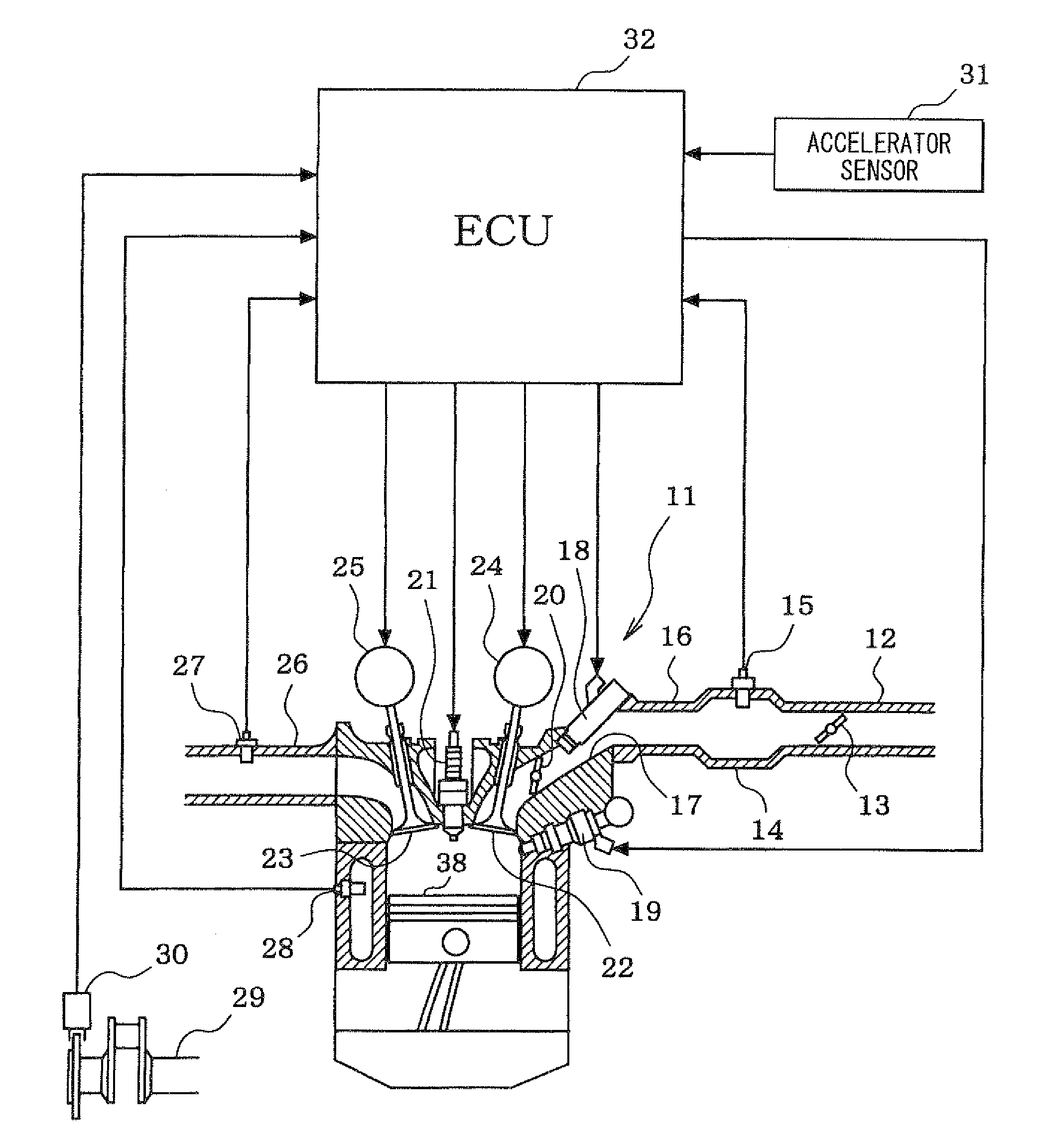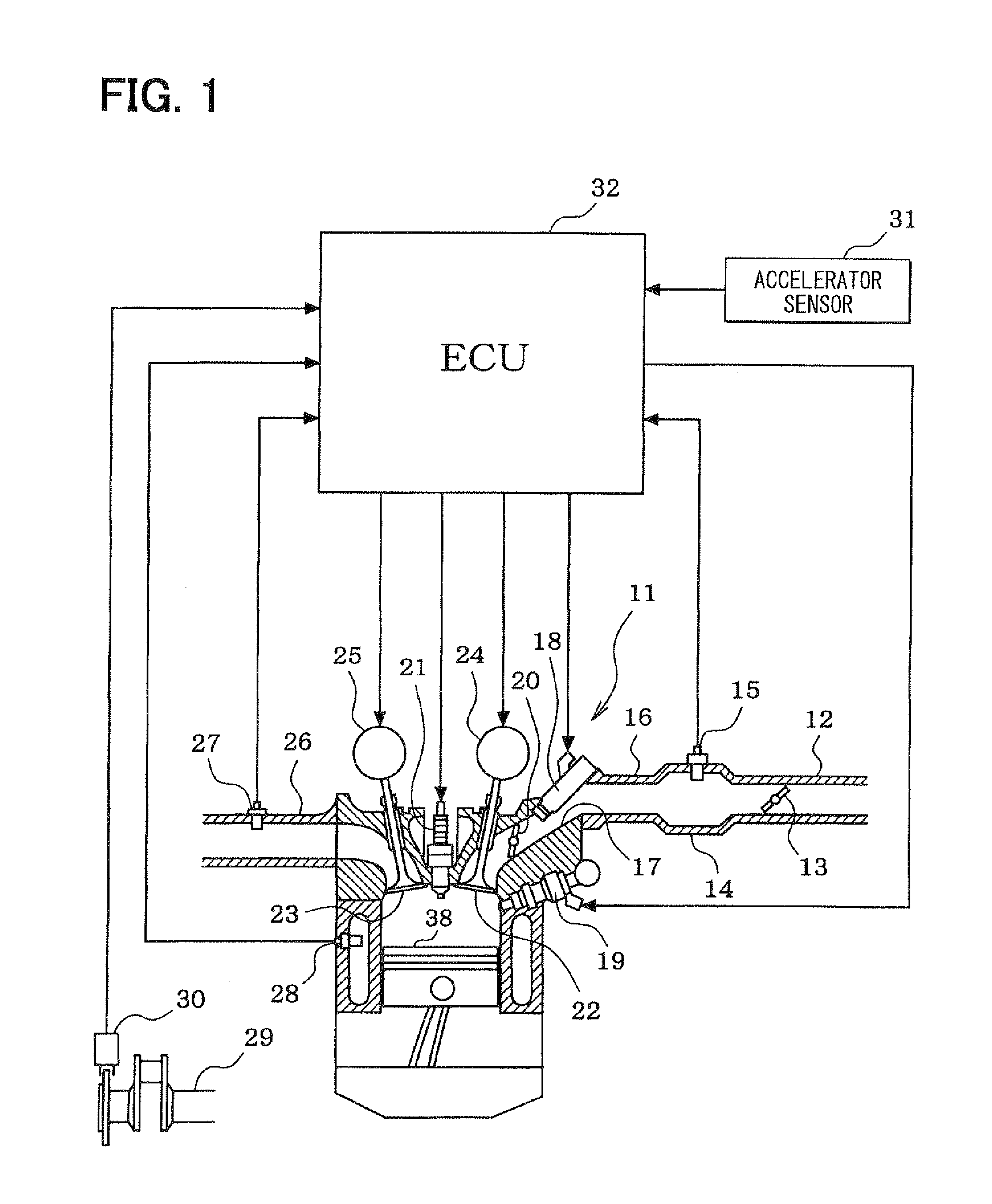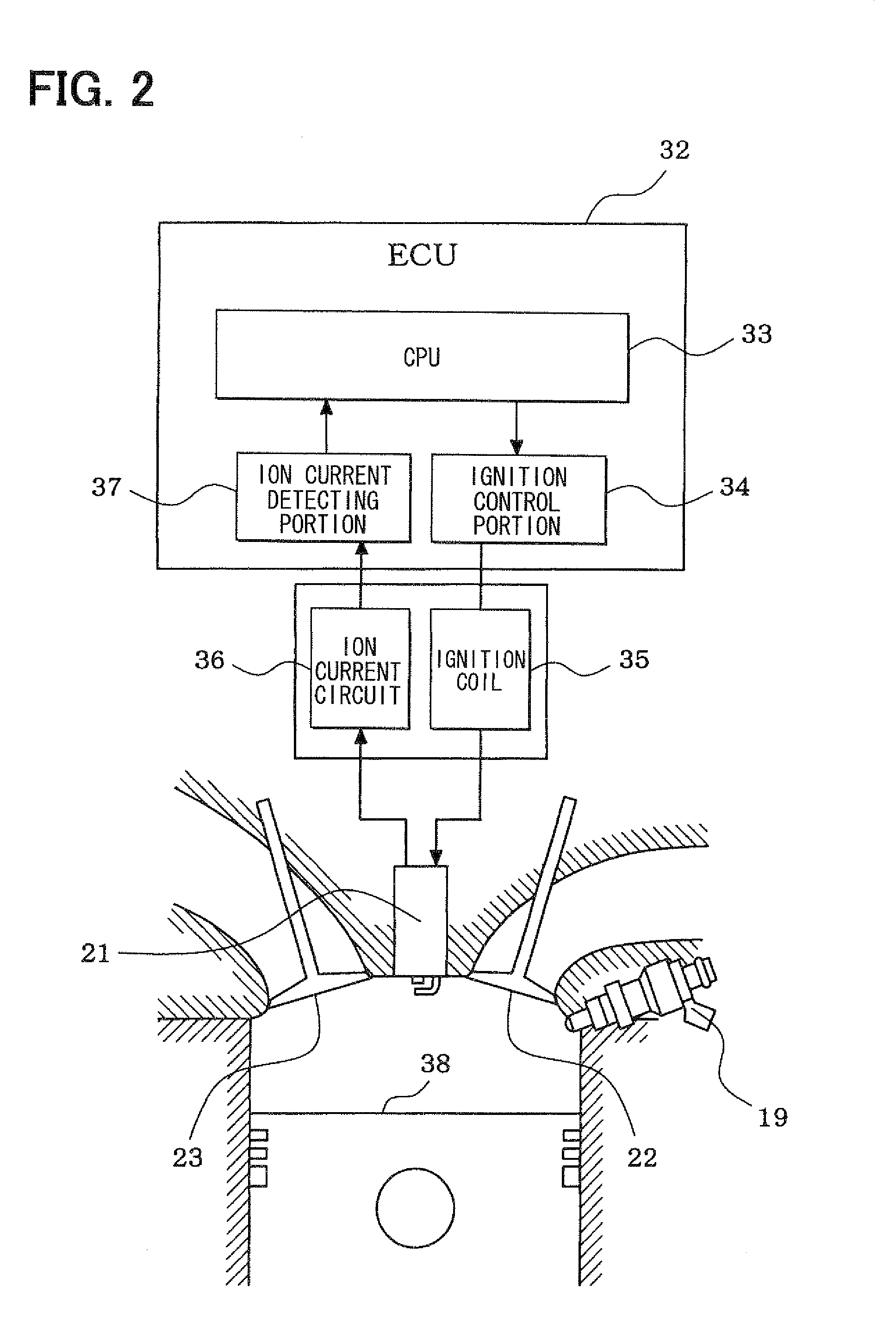Controller for internal combustion engine
a controller and internal combustion technology, applied in the direction of electric control, machines/engines, instruments, etc., can solve the problems of delayed difficult control difficult stabilization of the combustion condition, so as to achieve effective stabilization of the self-ignition combustion condition
- Summary
- Abstract
- Description
- Claims
- Application Information
AI Technical Summary
Benefits of technology
Problems solved by technology
Method used
Image
Examples
first embodiment
[0028]Referring to FIGS. 1 to 7, a first embodiment will be described hereinafter. Referring to FIG. 1, an engine control system is explained. An intake pipe 12 of an internal combustion engine 11 is provided with a throttle valve 13 which is driven by a motor (not shown). A surge tank 14 is provided downstream of the throttle valve 13. A pressure sensor 15 detecting an intake air pressure is disposed in the surge tank 14. An intake manifold 16 which introduces air into each cylinder of the engine 11 is connected to the surge tank 14.
[0029]The engine 11 is provided with a fuel injector 18 for an intake port injection and a fuel injector 19 for a direct injection. The fuel injector 18 injects the fuel into the intake port 17, and the fuel injector 19 injects the fuel into a cylinder directly. An air flow control valve 20 is disposed at each of the intake port 17 in order to control an air flow intensity (an intensity of swirl flow and an intensity of tumble flow) in each cylinder. A ...
second embodiment
[0060]Referring to FIGS. 8 to 10, a second embodiment will be described hereinafter. As to the same parts and components as those in the first embodiment, the same descriptions will not be reiterated.
[0061]As shown in FIG. 8, since the ion quantity generated in the cylinder according to the combustion condition is varied to vary the ion-current, the ion-current is information which represents the combustion condition accurately. According to the second embodiment, the ion-current generated in accordance with the combustion condition of the air-fuel ratio is detected through the terminals of the spark plug 21. The integrated value (absolute value) of the ion-current signal is used as the information representing the combustion condition. In this case, according as the combustion becomes rapid, the ion quantity is increased and the integrated value of the ion-current signal becomes large. According as the combustion becomes slow, the ion quantity is decreased and the integrated value ...
PUM
 Login to View More
Login to View More Abstract
Description
Claims
Application Information
 Login to View More
Login to View More - R&D
- Intellectual Property
- Life Sciences
- Materials
- Tech Scout
- Unparalleled Data Quality
- Higher Quality Content
- 60% Fewer Hallucinations
Browse by: Latest US Patents, China's latest patents, Technical Efficacy Thesaurus, Application Domain, Technology Topic, Popular Technical Reports.
© 2025 PatSnap. All rights reserved.Legal|Privacy policy|Modern Slavery Act Transparency Statement|Sitemap|About US| Contact US: help@patsnap.com



